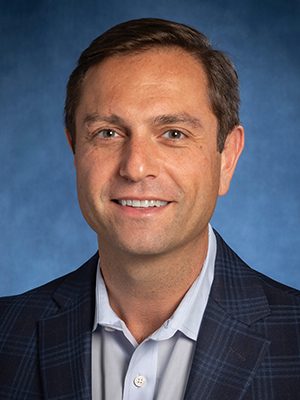
The León Troper, M.D. Professorship in Computational Pathology
Dr. Alexander S. Baras is the inaugural holder of the León Troper, M.D. Professorship in Computational Pathology and the Director of the Division of Computational Pathology and Informatics in the Department of Pathology. Dr. Baras holds joint appointments in the Departments of Urology and Oncology, and Applied Health Science Informatics in the Johns Hopkins University School of Medicine.
Dr. Baras is a world-renowned expert and thought leader in data science as applied to pathology. His research focuses on the application of advanced machine learning and artificial intelligence techniques to both genomics and imaging modalities in pathology. His team has developed a number of algorithms such as: (a) DeepTCR which uses artificial intelligence to model and predict how the immune system receptors detect both infectious pathogens and cancer cells, and (b) ATGC which leverages sophisticated deep learning algorithms under so-called “weak supervision” to uncover mutational signatures present in various cancer types. Dr. Baras’ team has been working on important biomarkers such as TMB (total mutational burden). They have built better calibration tools along with discovering unexpected non-monotonic relationships (i.e., a “Goldilocks effect”) of this biomarker to clinical outcomes. Dr. Baras has authored more than 90 peer-reviewed publications, appearing in high-impact journals such as Nature, Biomedical Engineering, Cell, Genome Research, Cancer Discovery, and Lancet Oncology.
As Director of the Division of Computational Pathology and Informatics in the Department of Pathology, Dr. Baras provides vision and oversight for various aspects of laboratory data integration within the overarching health information technology landscape at the Johns Hopkins University School of Medicine and the Johns Hopkins Healthcare System. Some highlights include the integration of discrete genomic data from routine testing into the electronic health record, which led to Johns Hopkins University participating in the American Association of Cancer Research Genomics Evidence Neoplasia Information Exchange Consortium. Additionally, Dr. Baras leads the efforts at Johns Hopkins Medicine to digitize routine microscopy slides into a format that can be analyzed by various image analysis and deep learning models. This led him to establish the first digital pathology clinical tool at Johns Hopkins Medicine. Dr. Baras provides outstanding clinical care as a surgical pathologist specializing in urologic and gynecologic pathology. Since joining the Department of Pathology faculty in 2014, he has signed out more than 12,000 clinical cases representing the review of more than 200,000 microscopy slides.
Dr. Baras received his undergraduate degree in biology at Georgetown University as a Howard Hughes Scholar. He received his doctoral degree in experimental pathology and his medical degree from the University of Virginia as part of the National Institutes of Health Medical Scientist Training Program. He completed his residency training in anatomic pathology, followed by a fellowship in genitourinary pathology in the Johns Hopkins Department of Pathology. Directly following, he joined the faculty as an Assistant Professor. Dr. Baras is a member of the United States and Canadian Academy of Pathology (USCAP) and serves on the Pathology Electronic Reporting Committee of the College of American Pathologists where he was the lead author of the immunohistochemical reporting template for various biomarkers. He mentors medical students, residents, master's students, and doctoral and post-doctoral research fellows. Dr. Baras lectures at academic institutions and national conferences such as USCAP and the American Society of Clinical Oncology.
“It is a great honor to serve as the inaugural León Troper, M.D. Professor in Computational Pathology. This professorship is a tremendous opportunity. The resources afforded to me and my team through this professorship, and other philanthropy that Dennis Troper and Susan Wojcicki have generously provided, has enabled us to pursue important and clinically impactful research questions. By far, one of the most important resources was the first GPU cluster my team was able to acquire early in my career which allowed us to conduct a variety of research studies that otherwise would not have been possible. It also gives me the flexibility to offer my trainees high-end computing resources without constraints on available compute time. I look forward to applying these resources to continue driving forward the digital transformation in anatomic pathology!”

